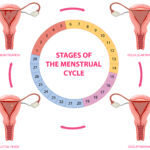FREE SHIPPING OVER $50
Doctors Agree: This Is the Best Exercise to Fight Aging and Stay Youthful
Aging is inevitable, but the way you age is often within your control. Doctors and fitness experts increasingly agree that resistance training—commonly known as strength training—is the most effective exercise to combat the aging process and maintain youthful vigor. This article explores the science behind resistance training, its extensive benefits for longevity, and practical tips on how to incorporate it into your daily routine to fight aging and stay youthful.
The Anti-Aging Power of Resistance Training

Resistance training involves working against a force to increase muscle strength and endurance. It includes weightlifting, body-weight exercises, and resistance band workouts. What makes resistance training stand out is its profound impact on muscle mass and metabolic rate, two critical factors in aging. As we age, our muscles naturally weaken and our metabolism slows, but regular resistance exercises can counter these effects by stimulating muscle growth and enhancing energy expenditure.
Doctors emphasize that maintaining muscle mass is not just about physical appearance—it’s a key component of overall health. Strong muscles improve balance, reduce the risk of injury, and help control blood sugar levels, all of which contribute to a longer, healthier life. Moreover, resistance training has been shown to support cognitive function and mood, further underscoring its role in staying youthful.
The Benefits of Resistance Training for Longevity
Resistance training offers numerous benefits that extend far beyond building strength. It is a cornerstone of anti-aging fitness because it addresses several critical aspects of health simultaneously. Here are some of the top benefits:
1. Muscle Preservation:
Resistance training combats the natural loss of muscle mass that occurs with aging, helping you maintain strength and independence as you get older.
2. Metabolic Boost:
By building lean muscle, resistance training increases your resting metabolic rate, allowing your body to burn more calories even at rest.
3. Bone Density Improvement:
Weight-bearing exercises promote bone health, reducing the risk of osteoporosis and fractures, which are common concerns in older adults.
4. Joint Stability:
Strong muscles support and stabilize your joints, reducing pain and the risk of injuries, making everyday movements easier and safer.
5. Enhanced Functional Fitness:
Resistance training improves overall physical function, making it easier to perform daily activities like climbing stairs, carrying groceries, and maintaining balance.
6. Cognitive Benefits:
Research suggests that resistance training can enhance cognitive function and memory, possibly due to increased blood flow and the release of growth factors.
7. Mood Enhancement:
The endorphin release associated with resistance training helps reduce stress and improve mood, contributing to a more positive outlook on life.
The Science Behind Resistance Training and Aging
The relationship between resistance training and anti-aging is supported by a growing body of scientific research. Here are some key findings:
- Hormonal Regulation:
Resistance training stimulates the release of growth hormones and testosterone, both of which play significant roles in muscle repair, regeneration, and overall vitality. These hormones decline naturally with age, so boosting their levels through exercise can help maintain a youthful body composition. - Enhanced Mitochondrial Function:
Studies have shown that resistance training improves mitochondrial efficiency. Mitochondria are the powerhouses of the cell, and better mitochondrial function means more energy production and less oxidative stress, a major contributor to cellular aging. - Inflammation Reduction:
Chronic inflammation accelerates aging and is linked to various age-related diseases. Resistance training has been found to reduce markers of inflammation, promoting a healthier internal environment and reducing the risk of chronic conditions. - Improved Insulin Sensitivity:
As we age, insulin sensitivity typically decreases, which can lead to metabolic issues such as type 2 diabetes. Regular resistance training enhances insulin sensitivity, helping maintain stable blood sugar levels and supporting overall metabolic health. - Neuroprotective Effects:
Emerging research indicates that resistance training may have neuroprotective benefits, potentially slowing cognitive decline. The increased blood flow to the brain and the release of neurotrophic factors during resistance training contribute to this protective effect.
These scientific insights reinforce the idea that resistance training is not just about building muscle—it’s a comprehensive approach to fighting the aging process at a cellular level.
How to Incorporate Resistance Training into Your Routine
Adding resistance training to your routine doesn’t require a complete lifestyle overhaul. With the right approach, you can integrate strength exercises into your daily life, even if you’re new to fitness. Here are some practical steps to get started:
- Start Slow and Progress Gradually:
If you’re new to resistance training, begin with body-weight exercises such as push-ups, squats, and lunges. Gradually incorporate dumbbells, resistance bands, or other weights as your strength improves. - Schedule Regular Sessions:
Aim for two to three resistance training sessions per week. Consistency is key, so set aside specific days and times for your workouts to build a sustainable habit. - Mix It Up:
Variety is important to keep your workouts engaging and to target different muscle groups. Alternate between upper-body, lower-body, and full-body workouts to ensure balanced strength development. - Focus on Form:
Proper form is crucial to maximize benefits and prevent injuries. Consider working with a trainer or using reputable online resources to learn the correct techniques for each exercise. - Listen to Your Body:
While pushing yourself is important, it’s equally crucial to avoid overtraining. Allow adequate rest between sessions and pay attention to any signs of discomfort or fatigue. - Combine with Other Exercises:
For overall fitness, combine resistance training with cardiovascular and flexibility exercises. A well-rounded fitness routine supports not just muscle strength but also heart health and mobility.
By following these steps, you can seamlessly integrate resistance training into your routine, reaping the anti-aging benefits without feeling overwhelmed.
Other Lifestyle Factors to Enhance Youthfulness
While resistance training is a powerful tool for combating aging, it works best when combined with other healthy habits. Consider these additional factors to maximize your youthful vitality:
- Balanced Nutrition:
A diet rich in whole foods, lean proteins, healthy fats, and complex carbohydrates provides the nutrients your body needs to repair and maintain itself. Proper nutrition supports muscle growth, hormone balance, and overall cellular health. - Quality Sleep:
Sleep is essential for recovery and regeneration. Aim for seven to nine hours of quality sleep each night to support the benefits of your resistance training and overall health. - Stress Management:
Chronic stress can accelerate aging. Incorporate stress-reduction techniques such as meditation, yoga, or deep breathing exercises into your daily routine to keep stress levels in check. - Hydration:
Staying hydrated is vital for metabolic processes and overall well-being. Drinking plenty of water helps maintain energy levels and supports muscle recovery. - Regular Physical Activity:
In addition to resistance training, staying active through walking, cycling, or other low-impact exercises contributes to overall fitness and longevity.
Conclusion
Doctors agree that resistance training is the best exercise to fight aging and stay youthful. Its ability to preserve muscle mass, boost metabolism, improve bone density, and support overall physical and cognitive health makes it a cornerstone of anti-aging fitness. Unlike high-impact exercises that may cause joint stress, resistance training offers a safe, effective way to enhance strength and vitality without sacrificing joint health.
Related Articles
- Want a Younger Brain? Science Says This Workout Combo Beats Crosswords
- How This 60-Year-Old Defied Aging and Feels 30 Every Day
- I Slashed My Metabolic Age by 18 Years After 50—Here’s Exactly How You Can Too
- Why the Risk of Dying from This Disease Increases After 50—And How to Prevent It
- Top 10 Healthy Snacks That Might Be Silently Wrecking Your Heart After 60







